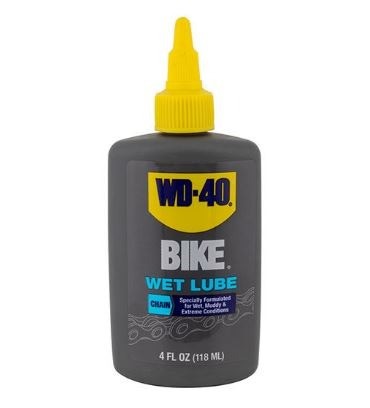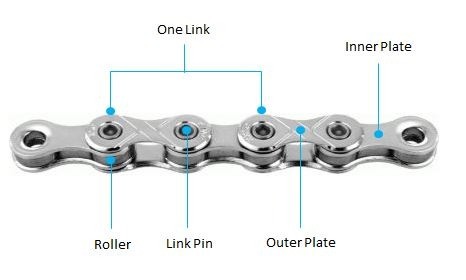A bike chain is one of the most important parts on your bike and learning how to lubricate your bike chain is equally important. Bike chains need a lubricant to prevent rust, wear, and overcome mechanical resistance. Properly lubing your chain should be done in moderation, and the type of lube, amount per application, and frequency of application greatly depends on your riding frequency and conditions.
Chain lube use is a highly debated topic among mountain bikers because everyone thinks their way is the best. You will soon find that the use of chain lube is an experimental process and the following can be used as a guide to help you learn how to lubricate your bike chain.
Different Types of Chain Lube
Due to the number of chain lubes on the market and the number of different ways one can apply all those lubes, there isn’t one lube that is greater than another. As stated above, what works best is a matter of personal experiment. However, it is important to recognize that different types of lubes suit certain conditions.

Finish Line Dry Teflon Lube
Dry Chain Lube
Dry lube goes on wet and then dries, leaving behind a protective, lubricating layer. The lubricating layer left behind is typically wax, Teflon, or ceramic depending on the lube. Dry lube also has a much lighter consistency than wet lube. Dry lube does not stand up well to the rigors of mud and wet weather riding, but it does extremely well at not attracting dirt in dry conditions. This particular lube can be great when riding in the dusty, dry conditions of the Southwest. It can also be great if you are worried about getting chain lube on your hands or clothes. Dry lubes typically are less messy than wet lubes. The only downside to dry lube is that it must be applied more frequently than wet lube.

WD-40 Wet Chain Lube
Wet Chain Lube
Wet lube has a thick and sticky consistency, which makes it great for use in wet or muddy conditions. It also acts as a water repellent, which is why it does better in these conditions. Wet lube typically lasts longer than dry lube because it stays wet on the chain. It is important to note that it attracts more dirt in dry, dusty conditions. This lube would be great for riding in the Pacific Northwest as the conditions there are often times wet and muddy.

ProLink All-Weather Chain Lube
In Between
While strict wet and dry lubes mark the extremes of lube types, many manufacturers market an option in between. This is a great choice when first learning how to lubricate your bike chain. You can find lubes for both wet and dry conditions, self-cleaning, and made for both on and off-road riding.
Historically, the discussion surrounding types of lubes have revolved around using wet lube in wet conditions and dry lube in dry conditions, but these are simply guidelines. It is important to know what the different types of lubes are best suited for and adjust your maintenance habits to get the most out of any particular lube.
Bike Specific Chain Lube
I’m sure you’ve heard stories of mountain bikers creating their own chain lube concoction in their garage. Unless you’re a world-renowned chemist, you should probably stick to the lube made by bike-specific manufacturers. It is almost a no brainer, as they have spent thousands of hours researching and perfecting what works best. Generic and household products, such as WD-40 (unless bike-specific), are not long-term solutions and can actually be more damaging than helpful.
Non-specific lubes are either too light to stay put, too heavy to properly penetrate or too sticky or watery, and will attract a lot of dirt and dust. Bicycle specific lube is made thin enough to penetrate the rollers and pins, yet thick enough to stay on. It also helps prevent rust and resist dirt, water, and mud depending on the lube type. You don’t have to use bike-specific lube, but you should think twice before using anything else.
Application Process
Before you apply any lube to your chain, you need to shake the container thoroughly. The different ingredients in the lube may have separated while sitting on the shelf. After shaking, start by applying one drop per link as you backpedal the chain through the drivetrain. Be sure to take note of where you started to prevent over lubing. With a clean, dry rag, grip the chain and backpedal, wiping off any excess lube.
Continue to run the chain around the chainrings at least 10 more times. This will help work the lube into the chain. Then, slowly shift through the gears to distribute the lube to the cassette gears and chainrings. Wet lubes typically require a second wipe, so don’t forget to run your rag over again before riding. If you are applying a wet chain lube indoors, be sure to use a drop cloth to collect any mess.
The perfect amount of lube is enough to overcome the resistance set forth by the rollers, plates, and pins. The perfect amount of lube will also help prevent rust and wear to those parts without attracting an excessive amount of dirt. The picture below will help you easily distinguish between the parts of a chain link, i.e., the rollers, plates, and pins.
Most manufacturers will recommend some amount of wait time between the application of lube and riding. Dry lubes typically require a few hours to set, while a wet lube needs less. When learning how to lubricate your bike chain, be sure to check the manufacturer's recommendations on the back of the bottle as they differ by brand and type of lube. To play it safe, the best time to lube your chain is the night before.
Frequency of Application
Like any other component on your bike, the frequency at which chain lube should be re-applied depends on a number of factors. These factors include how often you ride, your riding conditions, the type of lube used, and your attention to chain care. Some riders may find themselves re-applying lube every day, while others may only need to apply it once a month. As an example, if you are using a wet lube in muddy conditions and find yourself wiping your chain down after every ride, chances are you will need to apply less lubrication than using a dry lube in the same conditions without wiping your chain down. As previously stated, it is an experiment and you need to figure out what works best through trial and error.
Over-lubing can also be detrimental, as excess lube attracts dirt, forming a gritty paste, which grinds down chain components and other drivetrain bits. The best indicator for when a chain needs to be lubed is sound. If your chain is squealing, squeaking, grinding, or creaking, you are starving it of lube and should apply immediately. Many riders tend to use the chain's distance, time, or appearance as an indicator. These methods can be reliable if you’ve studied the factors listed above and personally mastered how to lubricate your bike chain.
Applying One Type of Chain Lube Over Another
It is important to note that your chain is going to be fine, but the application of a dry lube over a wet lube can be unpredictable. While it is possible the new lube penetrates the chain and sets properly, it is also very likely that it will not. The lube may not be able to penetrate the rollers, plates, and pins because it is suspended by the old lube. Changing between types of lube is a case where using a degreaser may be warranted.
New Chains and Chain Lube
New chains come pre-lubed from the factory and can be used without degreasing or lubing. It is important to follow your normal lubing schedule after the new chain is applied. As discussed above, this depends on your riding frequency and conditions. Check out this article to learn when to replace your mountain bike chain.
Below is a list of well-respected bicycle chain lube brands to get you started:
Dry Lubes
Tri-Flow Superior Teflon Lubricant
Wet Lubes
All-Weather Lubes





